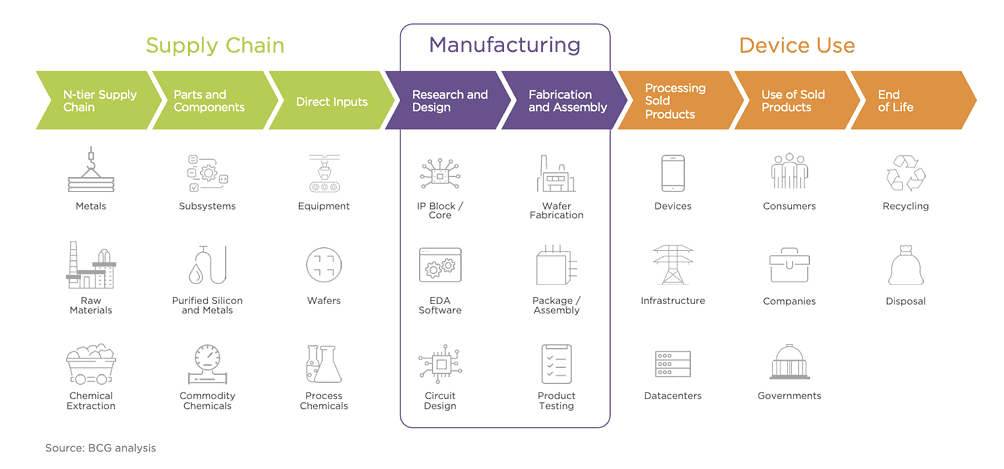
A groundbreaking report released by the Semiconductor Climate Consortium (SCC), in collaboration with Boston Consulting Group (BCG) and SEMI, reveals the semiconductor industry’s significant impact on global carbon emissions and the urgent steps needed to align with the 1.5°C climate goal.
The semiconductor industry, a linchpin of the global economy, is responsible for approximately 0.3% of direct global carbon emissions, with an additional 1% linked to its supply chain and product usage. As the industry grows, so does its carbon footprint, prompting calls for a concerted push towards net zero by 2050.
The report, based on an analysis of 1 million data points across 200 companies, highlights five key takeaways:
- Value Chain Emissions: Semiconductors produced in 2021 will contribute 500 megatonnes (MT) of CO2 equivalent over their lifetime, with the majority (63%) coming from device usage.
- Electricity as the Lever: Over 80% of the industry’s emissions are tied to electricity consumption. Transitioning to low-carbon energy sources is identified as the most significant opportunity for emission reduction.
- Innovation for the Remaining 16%: Addressing emissions from supply chains and manufacturing processes will require substantial investment in R&D and innovation.
- Emission Scenarios: Current commitments from governments and companies are insufficient to meet the 1.5°C pathway, with a projected overshoot of the carbon budget.
- The Value Chain Dilemma: Semiconductors are essential for digital technologies that help reduce emissions across industries, yet their production is emission-intensive.

The report underscores the complexity of reducing emissions within the semiconductor industry due to its deep interdependencies and the technical challenges involved in manufacturing. For instance, process gases used in manufacturing, such as perfluorinated compounds (PFCs), have a global warming potential thousands of times greater than CO2, yet are essential due to their unique properties.
Dual challenge
The industry faces a dual challenge: reducing its emissions while meeting the increasing demand for advanced semiconductors that enable other sectors to reduce their carbon footprint. The SCC acknowledges the difficulty in tracking and influencing emissions, especially those related to device usage driven by global consumer behavior and energy availability.
To address these challenges, the report calls for robust collaboration across the industry and with external stakeholders, including governments and energy providers. The SCC outlines a multi-faceted approach focusing on transparency, transitioning to low-carbon energy, and innovation to mitigate high GWP gases.
Despite the daunting task ahead, the report notes signs of progress, with companies increasingly reporting their emissions and establishing industry working groups to share best practices and drive action.






